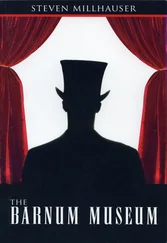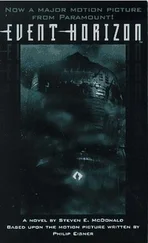The change came in early spring. Three separate events took place within one crucial ten-day period: the manufacturer discovered a cheaper and stronger substance, Splendimax, that reduced the cost of the domes by half; a pollution alert lasting an entire week drew new attention to the domes as pure environments; and a rash of kidnappings in small towns in Connecticut, Massachusetts, and Vermont led to a sudden interest in the domes as protective shells. Now the domes began to appear in less exclusive neighborhoods, where crowds gathered to watch enormous strips of Splendimax being lowered into place by towering cranes. Newspapers and weekly magazines paid close attention to the new middle-class phenomenon, which some journalists attributed to the influence of the mall, with its habit of combining disparate elements under a single roof. Others saw in the trend still another instance of a disturbing tendency in the American suburb: the longing for withdrawal, for self-enclosure, for expensive isolation.
As the domes began to spread slowly, rival manufacturers produced less costly varieties, composed of improved materials and marketed under an array of names (Vitrilon, XceliPlex, Amphiperm, Colossotherm), often with new and attractive features. One dome was equipped with a heating system for winter, another had retractable panels for controlling frost and mist, and one well-advertised version, promoted by educators, came with an artificial night sky that displayed constellations, planets, and other heavenly bodies, scientifically adjusted to latitude and longitude, which moved slowly across the inner surface and were far more vivid and convincing than those in the actual sky.
Yet this activity too might have run its course, leaving behind a scattering of domed properties in towns that had gone on to new diversions, had it not been for an event that took many observers by surprise. Just when it seemed that the market for domed houses had reached its limit, a developer decided to enclose several blocks of newly constructed homes on fourteen acres of land, beneath a single dome. The vast span of Splendimax rose not only over individual properties but over a small park with swings, a communal swimming pool, a stretch of oak and beech woods, and nine freshly paved streets. Two weeks later, in a nearby town, a gated community voted to endome itself; and as the fashion for doming continued to spread, citizens at town meetings and city halls began to debate the question of enclosing commercial districts and public lands, while keeping them accessible to area residents.
It was during this phase of enlarged domings that the first town voted to enclose itself, in a massive dome that was reputed to be one of the great engineering feats of the new millennium. The immensity of the structure, the sheer drama and bravado of it all, caused a sharp increase of interest, for the new magnitude represented a decision that could no longer be dismissed as a passing trend. Critics attacked the hostile apartness of the town, which in its hemisphere of VeridiGlo was said to resemble a walled medieval city, as if the advance in technology served only to conceal a secret atavism. Admirers, as might be expected, hailed the brilliance of the engineering, the grandeur of technological accomplishment, which placed the new dome in the noble line of the skyscraper, the suspension bridge, the hydroelectric dam, and the ancient pyramid. Others praised the domed town for its clean air — a system of escape vents permitted the expulsion of factory pollutants and gasoline fumes — while several took a more aesthetic approach, finding in the space enclosed by the dome a spirit of gaiety, of pleasurable artifice, reminiscent of the old European plaza with its fountain and shade trees or the American mall with its food court and Santa’s workshop, for under the roof of the dome the inhabitants of the town were said to feel a bond of community, a sense of uninterrupted gathering in a special place set aside for their common pleasure.
To the surprise of almost everyone, the new dome did not immediately spawn another. It was as if people felt that the doming process was moving ahead a little too rapidly and required a pause, during which the consequences of the new technology might be studied more carefully. It was recognized, to begin with, that the sheer cost of a dome this size far exceeded the annual budget of all but the wealthiest towns. At the same time, a broad range of practical problems had yet to be solved, such as the efficient flow of traffic into and out of the dome, the pattern and duration of nocturnal illumination, and the seasonal migration of birds living within the structure. People began to wonder whether they would be safer under a dome, or whether a permanent enclosure might prove harmful, in the long run. But even as the issue hung in the balance, decisions were being made in remote rooms, behind closed doors, that would soon change everything.
We live in the aftermath of those decisions. To say that the Dome is the single largest achievement in the history of architecture is inadequate and misleading. It is a leap beyond, into some new domain without a name. The story of its building is well known: the drama of starting on both coasts, the erection of the great pillars, the early collapse of the northwestern foundation, the construction of the offshore airports, the closing of the final gap. Many of us can scarcely remember a time when we did not live beneath a soaring roof of transparent Celestilux.
And yet the achievement is not without its detractors, even today. Critics argue that the Dome represents the complete triumph of the consumer society, of which it is the extravagant and unapologetic symbol. For the Dome, they say, has transformed the entire country into a gigantic mall, whose sole purpose is to encourage feverish consumption. The sensation of being under a common roof, of spending many hours under artificial lights, is said to stimulate in the average citizen a relentless desire to buy. And it remains true that the completion of the Dome has been accompanied by a sharp increase in consumer spending, as if everything beneath the Celestilux roof — houses, lakes, clouds — were being displayed to advantage and offered ceaselessly for sale. Some have even claimed that our Dome is the final flowering of the nineteenth-century department store, of which the American mall was only a transitional, horizontal form. According to this view, the great empty spaces of the Dome will gradually be put to commercial use; there are predictions of transparent floors in the sky, level upon level, connected by hollow Celestilux tubes containing motorized passenger platforms.
But those who dislike the Dome do not simply accuse it of serving the interests of late capitalism. They attack the name itself, arguing that the enclosure follows the irregular shape of the continental United States and is therefore no true dome. Defenders, while not denying that the lower base is irregular, are quick to remind their opponents that at the height of four hundred feet the soaring walls of Celestilux slope inward and gradually provide the base for a classic dome that rises over most of the nation. Indeed, the forging of a true dome above a vast, irregular perimeter is one of the engineering triumphs of the entire project. But defenders are not confined to such quibbles. They point proudly to a host of benefits: the national regulation of climate, the protection of our coasts against hurricanes, the creation of twenty-four-hour illumination and the consequent elimination of time zones, the Celestilux shield against ultraviolet radiation.
Without choosing sides in the debate, we may note a number of subtler changes. Because everything lies beneath a single dome, because everything is, in a very real sense, indoors, our feelings about Nature are no longer the same. The Dome, in a single stroke, has abolished Nature. The hills, the streams, the woods, the fields, all have become elements in a new decor, an artfully designed landscape — designed by the mere fact of existing under the Dome. This experience of landscape as style has been called the New Interiority. In former days, a distinction was made between inside and outside: people emerged from their homes or apartments and arrived “outside.” Today, one leaves one’s dwelling place and steps into another, larger room. The change is dramatic. The world, perceived as an interior, shimmers with artifice. A tree growing in a park is indistinguishable from a lifelike tree in the corner of a restaurant. A lake in the country is a more artful version of a tiled pool in a mall.
Читать дальше












